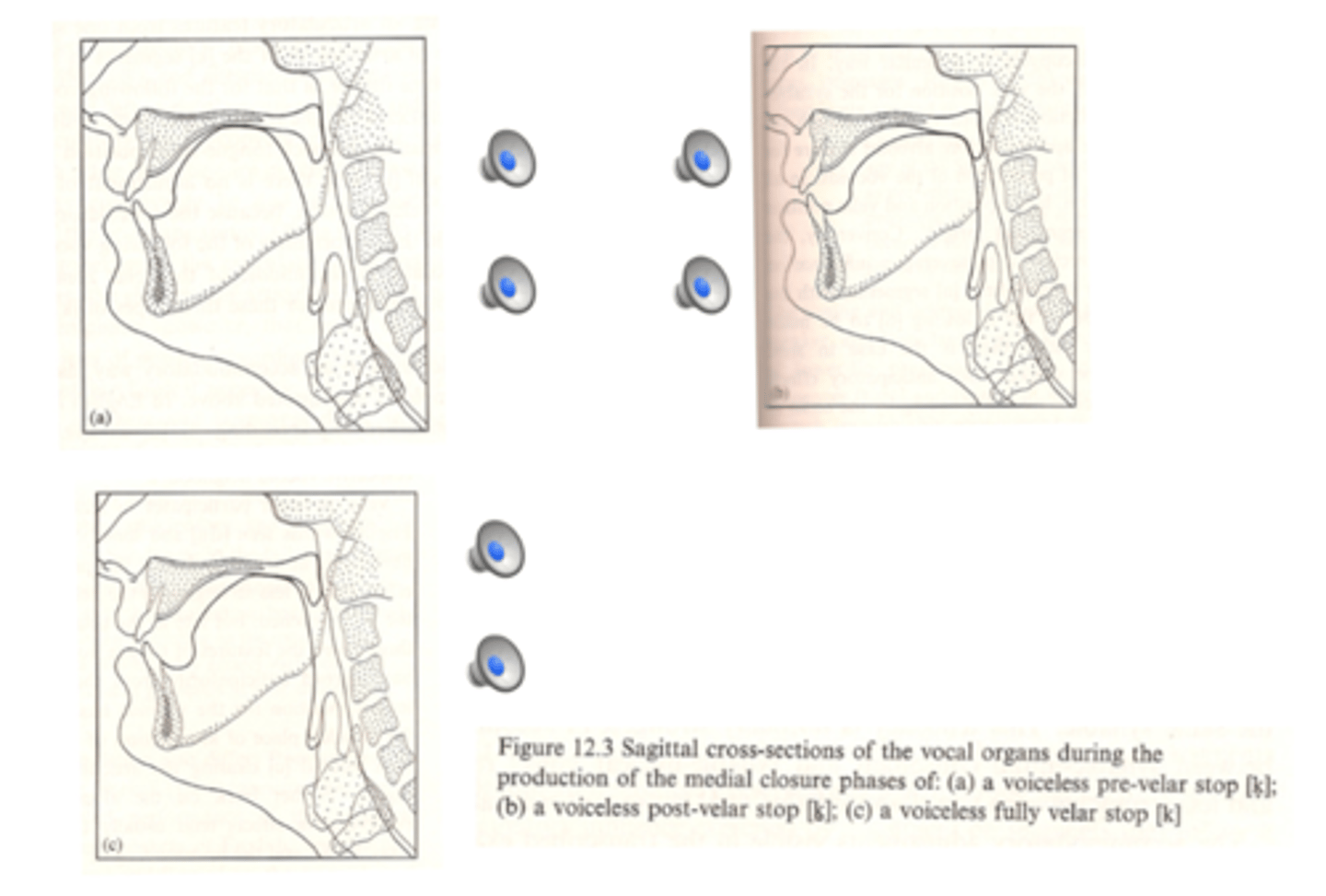phonation and stops CGSC433 exam 3
1/67
There's no tags or description
Looks like no tags are added yet.
Name | Mastery | Learn | Test | Matching | Spaced |
|---|
No study sessions yet.
68 Terms
phonation refers to
additional distinctions that can be made by the glottal sound source
different phonation patterns are possible for any
manner of consonant or vowel
voiceless of aspirated state of the glottis
vocal folds wide open, allowing air to pass through freely
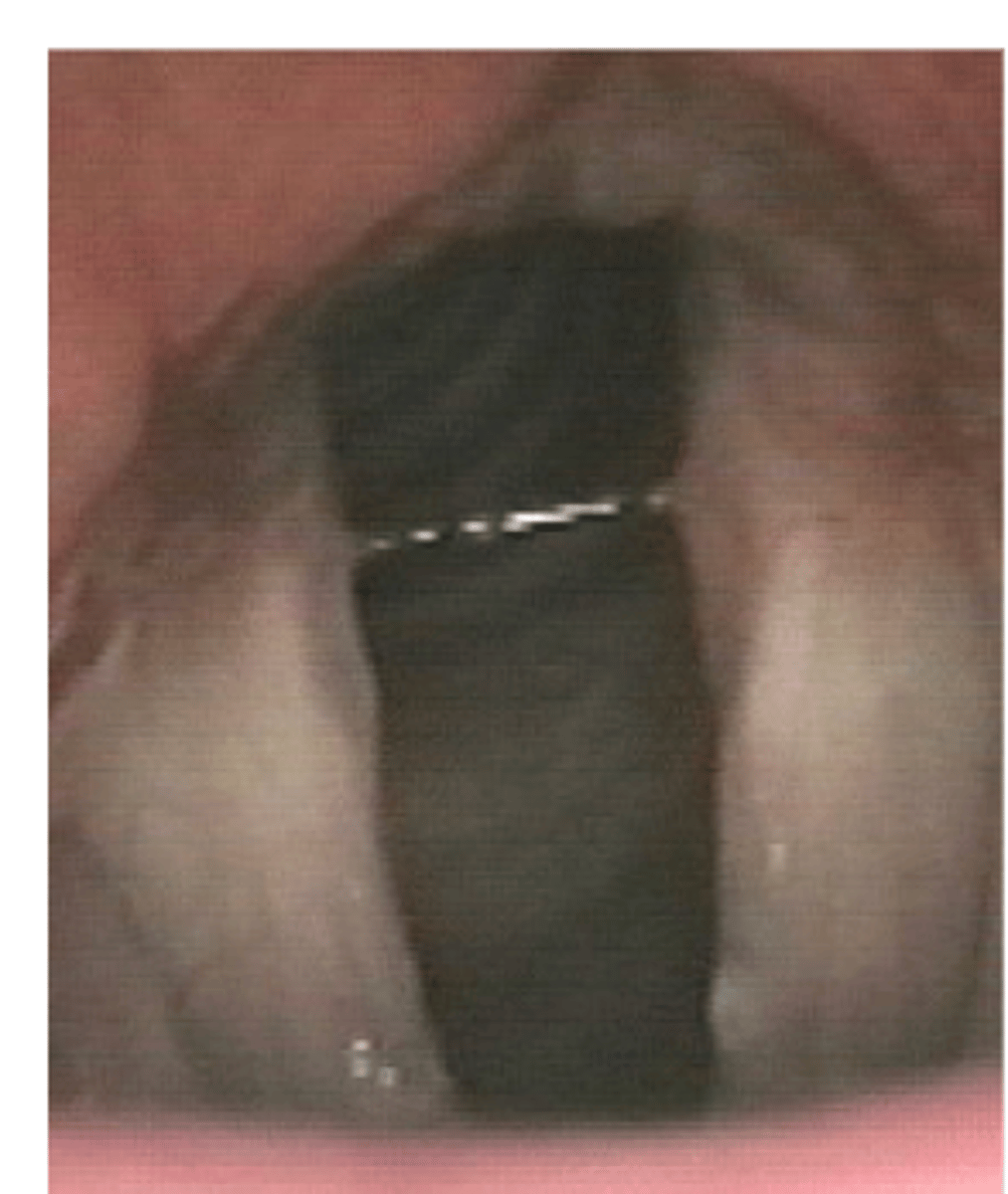
examples of voiceless or aspirated sounds in English
[p], [t], [k], [f], [s]
voiced AKA modal phonation
vocal folds vibrate normally
in English certain consonants
including [b], [v], [d], [g], [z], [m], and [n] and all vowels are generally voiced
voiced sounds produce
periodic wave which creates regular increases and decreases in pressure
breathy voice/murmur
vocal folds vibrate, but are held more loosely open, flap as air rushes by
creaky voice
one end of vocal folds is closed completely, while a small opening in the front is opened; it vibrates slowly and produces a low frequency sound
creaky voice has
slow, irregular vibration
creaky voice is also known as
vocal fry
open quotient refers to
the proportion of a cycle in which the glottis is open
creaky:
glottis is closed- the vocal folds are held loosely closed most of the time in the course of one cycle
breathy:
glottis is open (the vocal folds vibrate, but without much contact) most of the time in the course of one cycle
modal
glottis is open and closed for approximately equal amounts of time in the course of one cycle
the acoustic correlates are best viewed from
a spectrum, which is not LPC smoothed in order to see the harmonics
the difference between the amplitude of the 1st and 2nd harmonics can be
a good indicator of the phonation type
Amplitude of H1>H2
breathy
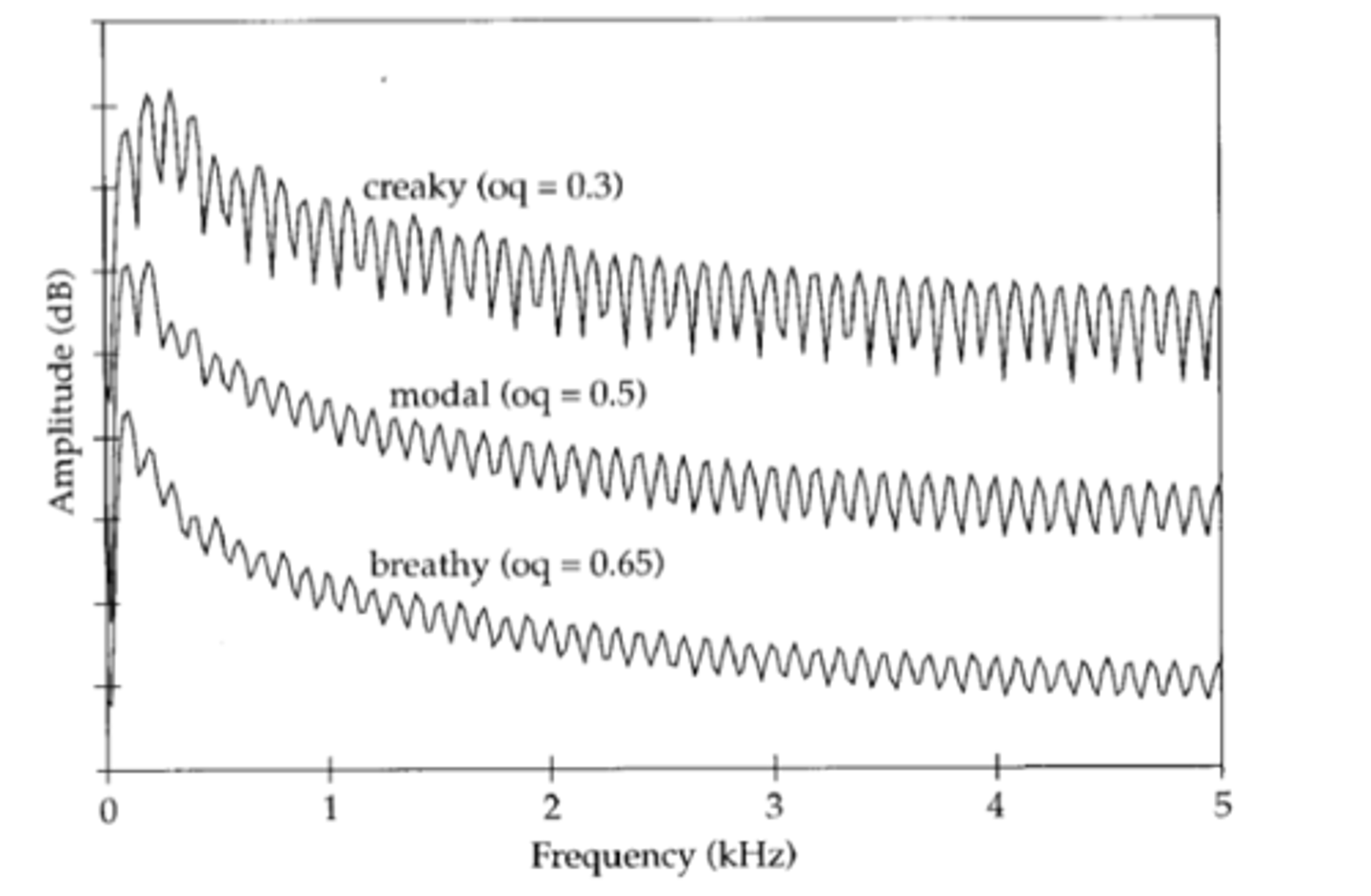
Amplitude of H1=H2
modal
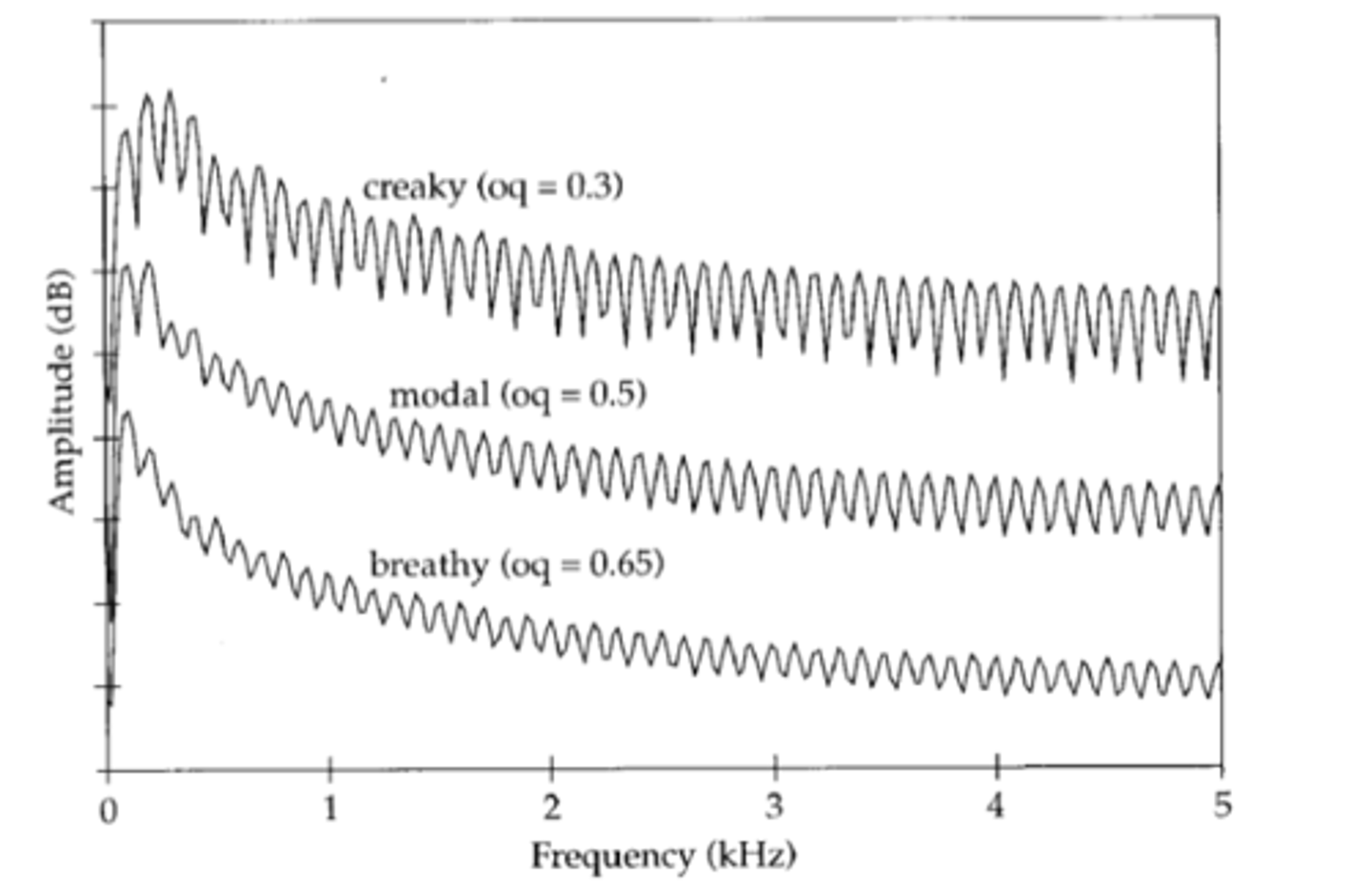
amplitude of H1
creaky
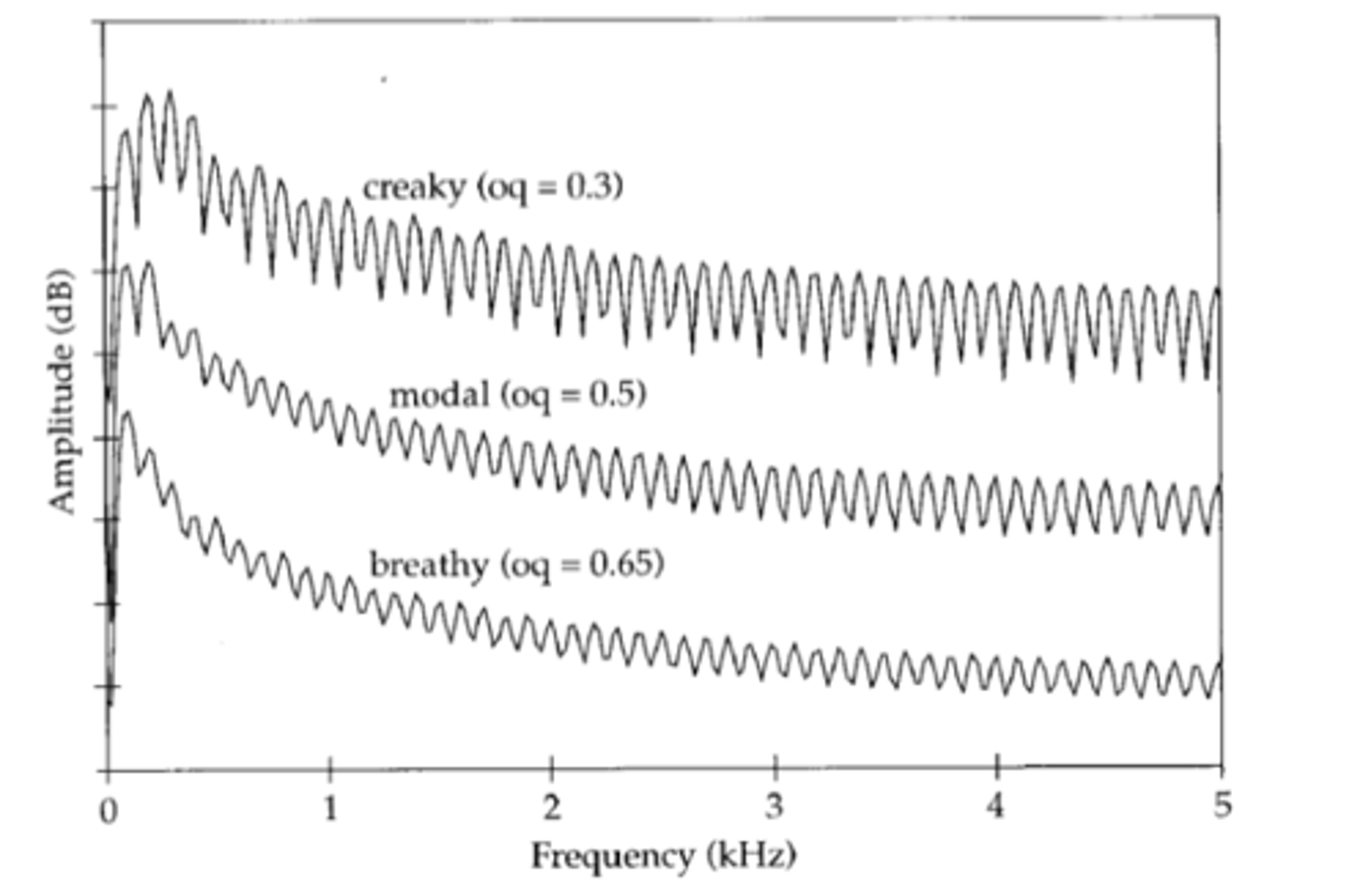
unlike vowels and fricatives, stops cannot be characterized by
a snapshot of the vocal tract at some point in time
stops are dynamic and characterized by a sequence of particular events in time
1. shutting 2. closure 3. release (which involves transition)
sources of sound in stops
shutting, closure, release
in the shutting stage
there may be some type of voicing- modal, creaky, breathy
preglottalized stops
creaky
pre-aspirated stops
breathy
during closure only possible source is
voicing, otherwise closure is voiceless
audible aspiration is
unlikely since walls of vocal tract muffle turbulence produced during closure
often see voicing in the spectrogram at
the beginning of closure, but can fade away towards end of closure
it is hard to maintain voicing with
lack of airflow past closure
the release begins with
a burst, a very short transient noise, produced when air pressure behind the closure is suddenly released
following the burst there may be
voicing- modal, creaky, or breathy or aspiration in the release
sources of sound in aspirated stops
burst noise, and aspiration noise
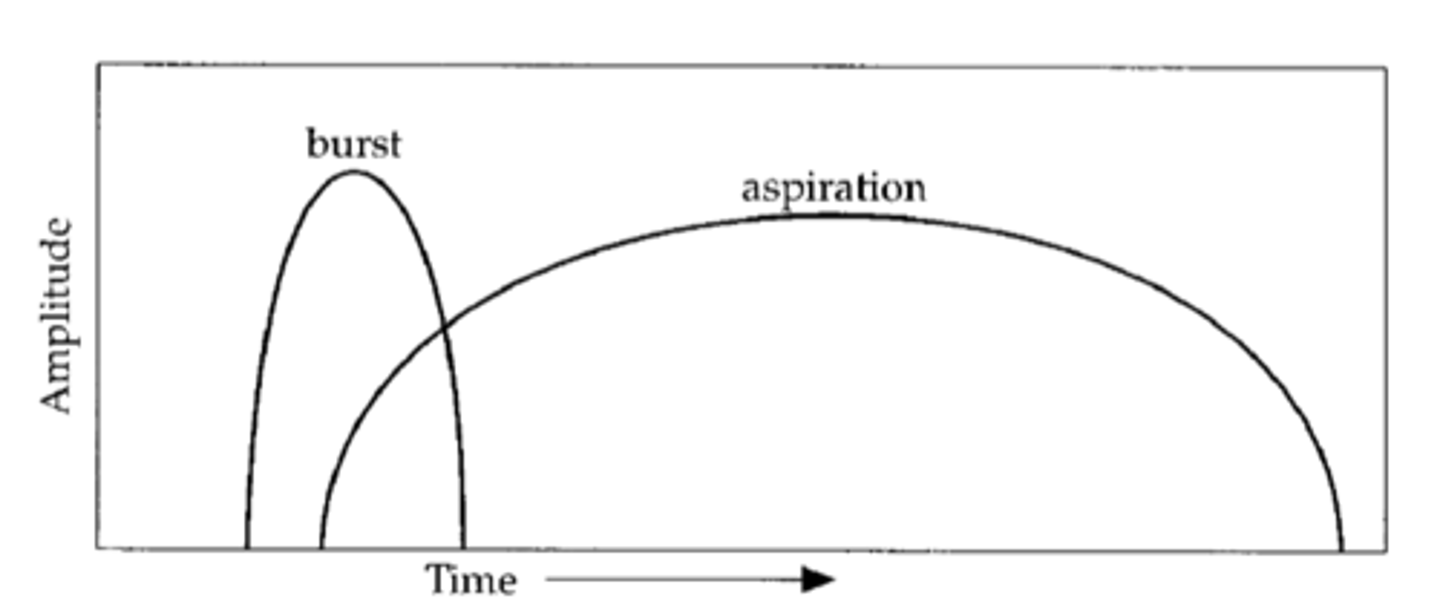
burst noise is
very short and produced at place of articulation
aspiration noise can be
very long and produced at glottis
[p/b, t/d, k/g] are distinguished by
voicing
stops build pressure above
larynx
voice onset time (VOT) is
start of vocal fold vibration relative to stop release
stop + vowel prevoicing languages
French and Russian [b, d, g]
![<p>French and Russian [b, d, g]</p>](https://knowt-user-attachments.s3.amazonaws.com/f529d666-75e6-4f1f-abb0-b388d81a86ec.png)
stop + vowel unaspirated languages
French and Russian [p, t, k] and German and English [b, d, g]
![<p>French and Russian [p, t, k] and German and English [b, d, g]</p>](https://knowt-user-attachments.s3.amazonaws.com/852ed67b-5a1b-41c6-aced-d7ff4b3f49ae.png)
stop + vowel aspirated languages
German and English [p, t, k]
![<p>German and English [p, t, k]</p>](https://knowt-user-attachments.s3.amazonaws.com/2df7d6a3-c0d5-4125-9623-6aacc254d897.png)
few languages distinguish
three levels of voicing
what language distinguishes three levels of voicing
Thai, pre-voiced, unaspirated, and aspirated
most languages distinguish
two levels of voicing- voiced/unvoiced
in the process of shutting and releasing
the vocal tract configuration filters the source as it does for vowels
the sound source is located at the
glottis and must pass through the rest of the vocal tract
location of stop constriction (place of articulation) determines
shape of the vocal tract
stops differ in
where they block flow
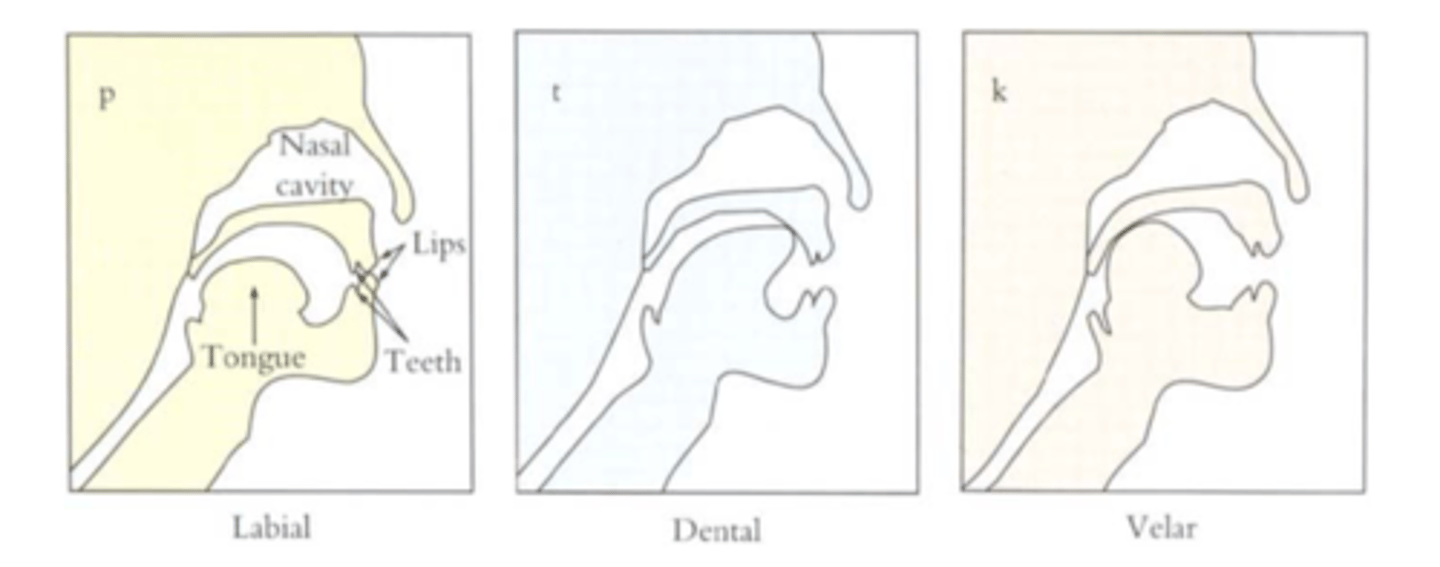
when stops are released they go through
a transition phase in between the stop and the vowel
from stop to vowel
1. shutting 2. closure 3. release burst 4. transition 5. "steady-state" vowel
from vowel to stop
transition, closure, then release burst if any
transition into obstruction F1 transition is usually towards
low frequencies

stop components from Armenian
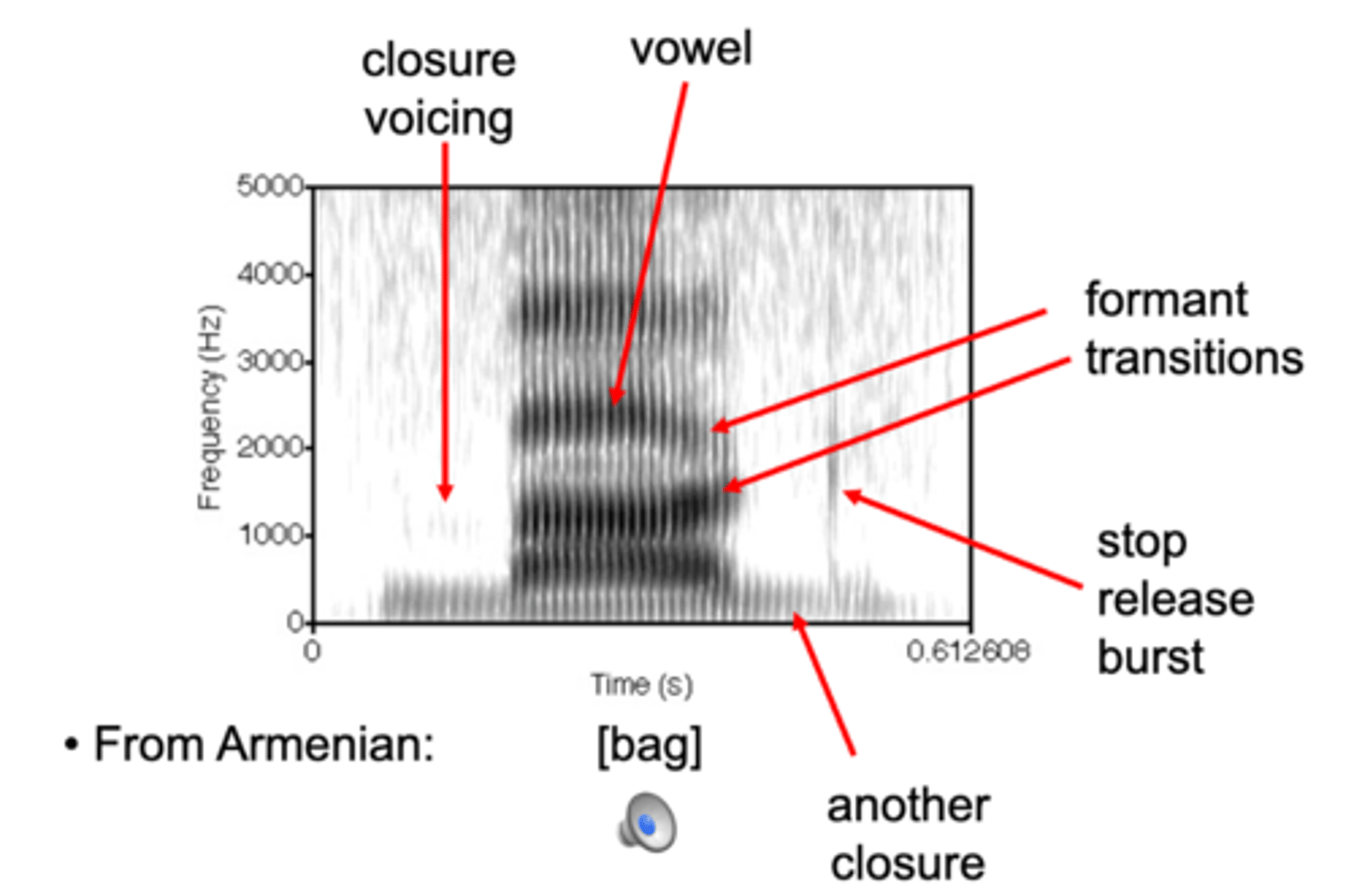
when the spectrogram was first invented phoneticians figured out quickly how
to identify vowels from their spectral characteristics but it was much harder learning how to identify stops by place of articulation
the formant transitions F2 and F3 between vowels and stops
provide a reliable cue to place of articulation
the resonant frequencies of the vocal tract change during
entrance or exit from closure phase
formant frequencies usually decrease near
bilabial stops
from front vowels into alveolars
F2 tends to slope downwards
from back vowels into alveolars
F2 tends to slope upwards
the value transitions for alveolars tend to point to the same
frequency value- 1800 Hz
1800 Hz for alveolars is known as
the locus of the formant transition
in the 1950s researchers theorized that the locus frequency can be used by
listeners to reliably identify place of articulation
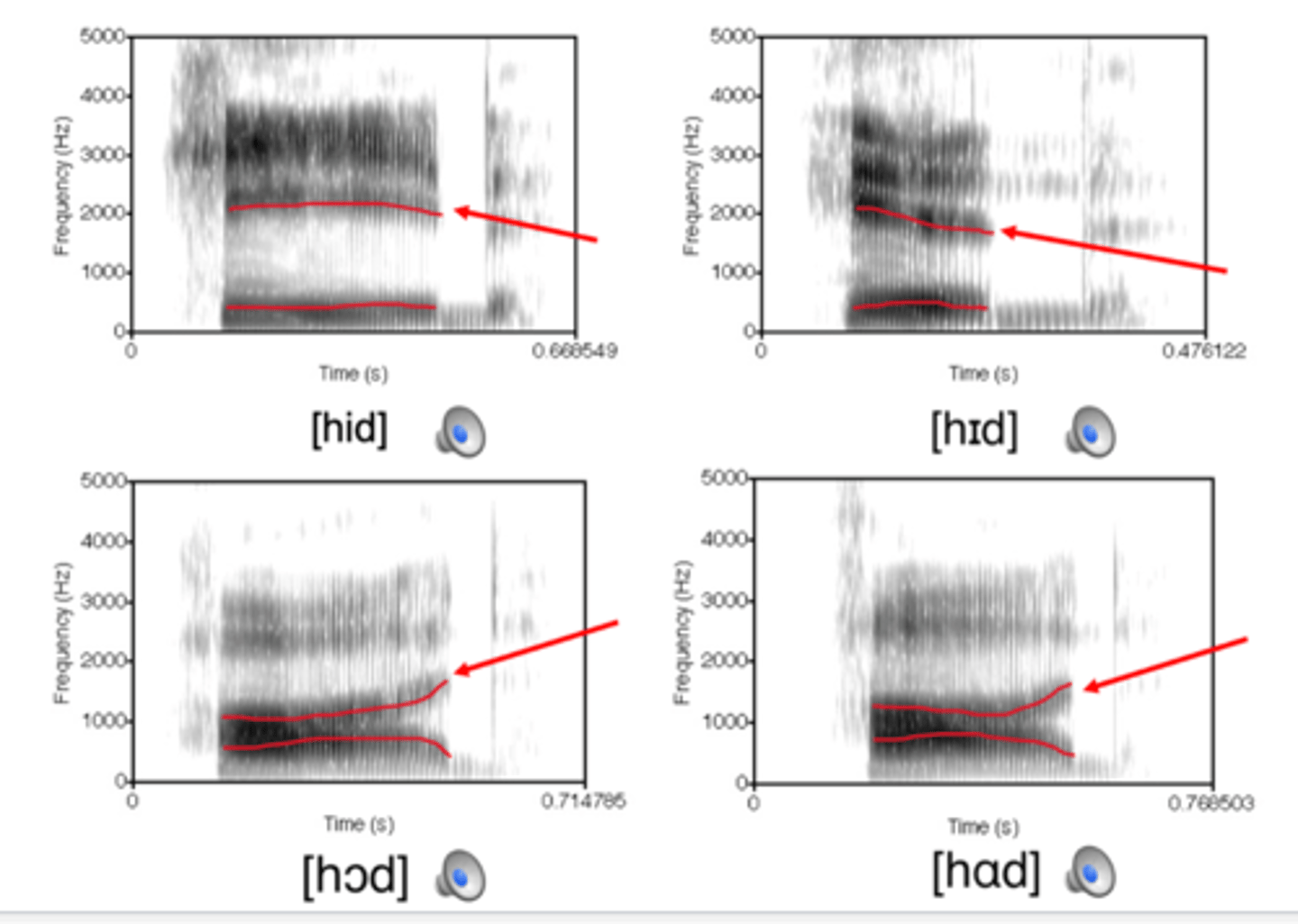
F2 and F3 often come together in
velar transitions-velar pinch
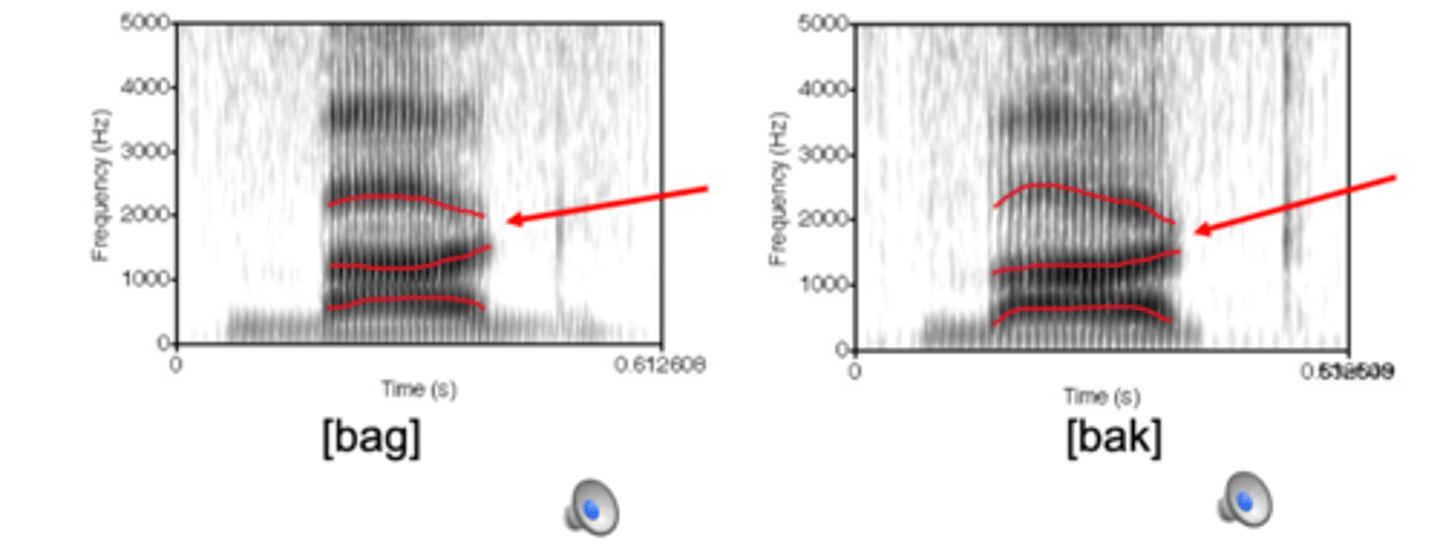
velars are a problem for
"locus theory" of perception
velars exhibit a lot of
co-articulation with neighboring vowels
fronter- more palatal next to front vowels
locus is high-1950-2000 Hz
backer more velar next to back vowels
locus is lower <1500 Hz
velar co-articulators
